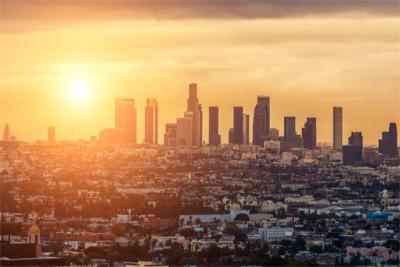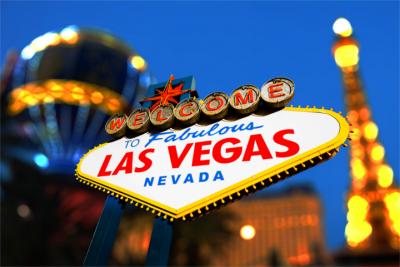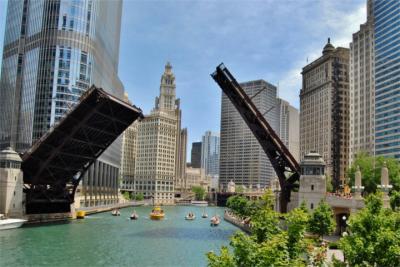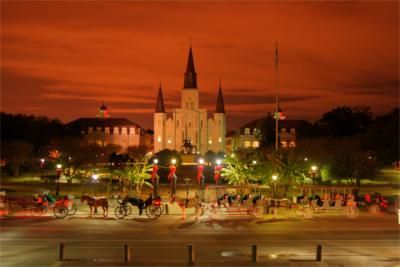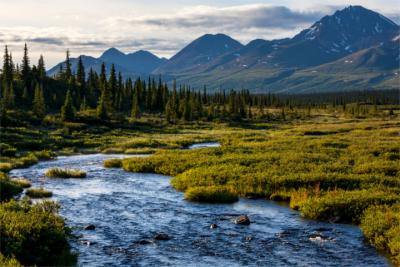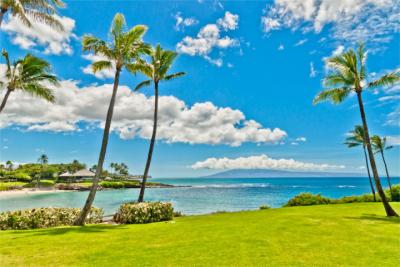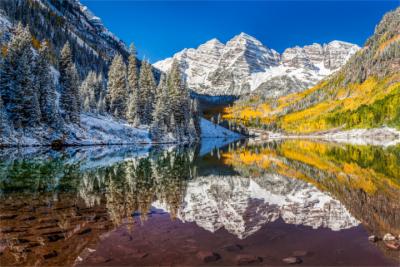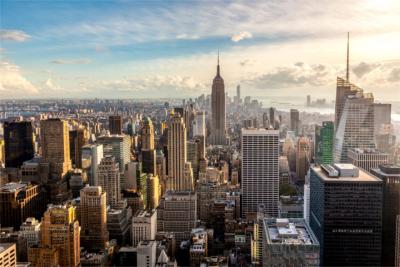Travel Offers
Travelmyne Featureprint
Distance
Alaska - Adventurous Wilderness
Experiencing Alaska means feeling free, starting an adventure and enjoying the breathtaking, unspoiled nature. Follow the traces of the Inuit, the Native Americans and the Aleut people or take part in a trip to watch whales, bears and other wild animals.
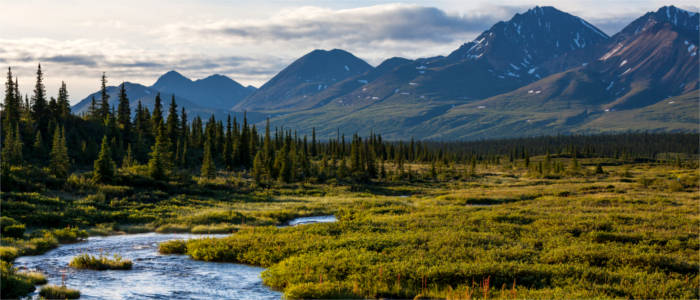
Geography - Alaska North Slope, Panhandle and the Aleutian Islands
With an area of 1,717,854 km², Alaska is not only the largest and northernmost state of the USA but also the greatest exclave on earth. It borders on Russia in the west, Canada in the east, the Pacific Ocean in the south and the Arctic Ocean in the north. Its capital is city of Juneau on the Panhandle, which is a region in the south-east along the border of British Columbia (Canada). The biggest city, however, is Anchorage. Alaska can be divided into three geographic regions: the Yukon–Kuskokwim Delta with its ranges of hills and mountains, the North Slope along the north coast and the mountain range along the south Pacific coast. The latter projects into the Pacific Ocean like an arm with a length of 800 kilometres (Alaska Peninsula) and is connected to the Aleutian Islands. The highest peak not only in Alaska but in the whole of North America is Mount McKinley (6,194 m). About five percent of the state's territory are covered in ice. There are thousands of glaciers, 650 of which have been named. The climate differs from region to region. There is continental climate in the heartland and subpolar climate in the north, while it is cool and temperate in the south and west.
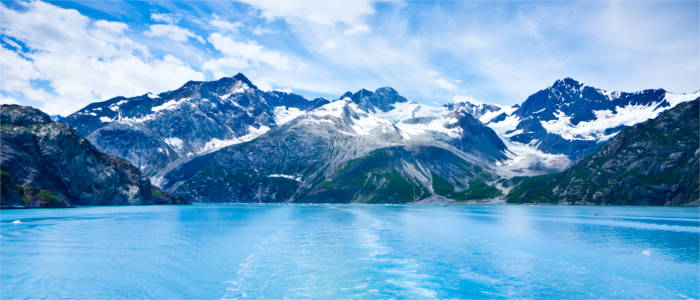
Nature - The unspoiled home of bears and salmon
Vast uninhabited landscapes which are characterised by an extraordinary abundant flora and fauna are characteristic of Alaska. While the coasts contain numerous fjords, the heartland is densely forested or covered in an endless tundra, which blossoms colourfully in late summer. Alaska also has many lakes and is crossed by a number of rivers. The longest river is Yukon River, which has its source in the Canadian Rocky Mountains. Impressive glaciers complete Alaska's scenery. The most special feature of the Aleutian Islands is their variety of active volcanoes. Members of Alaska's rich fauna are bears (brown, black and polar bears), reindeer, moose, mountain goats, bison, Dall sheep, killer whales, humpback whales as well as countless species of fish and birds. However, Alaska is most famous for its salmon. The flora of the northern US state is as impressive as its fauna. While black and white spruces, paper birches, American aspen, black cottonwood and alders grow in the forests, the tundra is vegetated by forget-me-nots, bulrush, salmonberries, Luetkea, bird vetch, shooting stars and dwarf fireweed.

Natural sights - Bright blue glacier caves
Alaska accommodates a great variety of natural sights such as numerous national parks and nature reserves, for example Glacier Bay National Park, Denali National Park, Gates of the Arctic National Park, Wrangell-St. Elias National Park, Lake Clark National Park and Kenai Fjords National Park. A truly impressive attraction is the Mendenhall Glacier near Juneau, whose walls have different shades of blue – a magical experience. The same is true of the northern lights, which you can see particularly well in the north of Alaska. Travellers who are interested in Alaska's fauna should visit Alaska Wildlife Conservation Center (Girdwood), Alaska SeaLife Center (Seward) or Alaska Zoo (Anchorage).
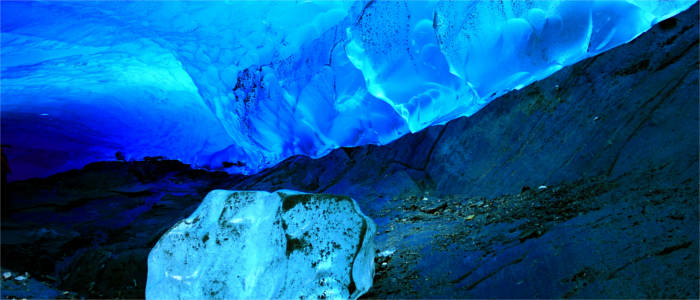
Culture - Following the traces of the native inhabitants
Alaska was probably first settled by Asian nomadic tribes, followed by different groups of Native Americans, Inuit and Aleut people. In the 18th century, Alaska was occupied by the Russians with short periods of Spanish and British rule. In 1867, Alaska became part of the USA but it was only declared the 49th state in 1959. The region's culture is still strongly influenced by the native inhabitants who have lived in accordance with nature for centuries. There are five major groups: the Inuit, the Inupiat, the Aleut people, the Native Americans in the heartland (Athabascans) and the Native Americans in the south-eastern coastal region (Tsimshain, Tlingit and Haida). The pioneers who came to Alaska during the gold rush in 1896 also left their mark. The totem poles in the cities, the small Native American villages and a variety of museums bear witness to this adventurous period of history.
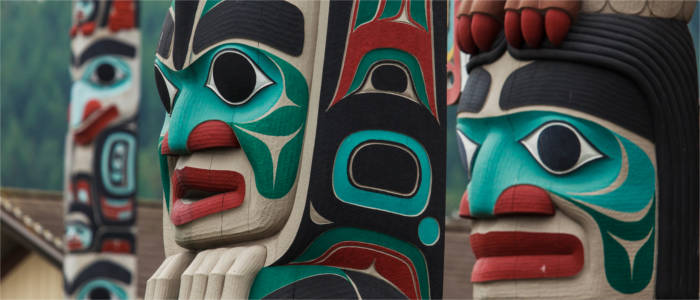
Cultural sights - Experiencing and understanding Alaska
Alaska owes many of its sights to its native inhabitants. Examples are the Alaska Native Heritage Center, the Alaska State Museum, the Totem Heritage Museum, the Totem Bight State Historic Site, the Oscar Anderson House Museum and the Alaska Center of Performing Arts. Carvings, bead-work, miniature totem poles and basketry are popular souvenirs now, which you can buy in the museums and heritage centres. Worthwhile destinations for day trips are small towns and fishermen's villages like Ketchikan, which display the typical way of living in Alaska.
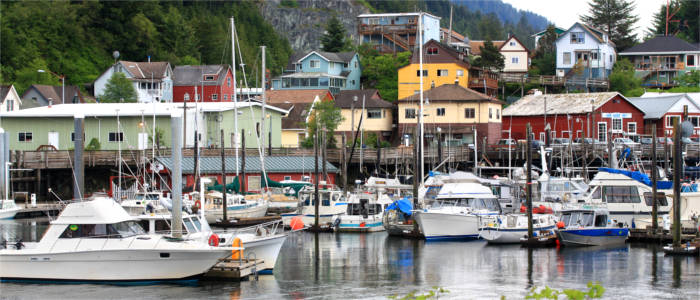
Experience - Watching the giants of the sea at first hand
Alaska has the nickname "The Last Frontier" because you can enjoy endless wilderness here, escape from civilisation and go on a real adventure. Thousands of people travel to the remote region every year to have a break from their stressful everyday life and find themselves. Despite its remoteness, Alaska accommodates several bigger cities which meet all the standards of the modern world. In addition, you can take part in different festivals and winter sports events such as the Iditarod Great Sled Race between Anchorage and Nome, the Blueberry Festival, the Alaska Hummingbird Festival in Ketchikan and the Stikine River Garnet Festival in Wrangell. A memorable activity is whale watching. Take part in a guided tour and marvel at the giants of the sea. Travellers who are interested in Alaska's cuisine should not expect too much because most dishes are typically American. Specialities are freshly caught fish, especially salmon and halibut. Deer dishes are surprisingly uncommon. Exceptions are reindeer steaks and sausages, which are offered in some regions.
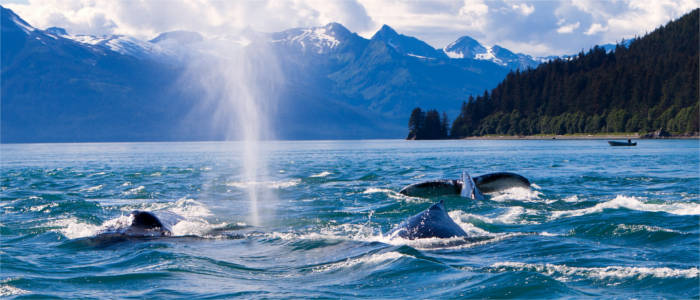
Activities - Indulging in the spirit of adventure
Alaska is a true adventure playground and a paradise for outdoor fans. There is no other place on earth where you feel this free, where nature is greater or more scenic and where you find such a great variety of sporting activities. A must on everyone's itinerary is a ride on a dog sled. Other popular activities are canoeing or kayaking, rafting, hiking, mountain biking, horseback riding, fishing and ice fishing, camping, golfing, watching wild animals, ice skating as well as skiing and riding the snow mobile.
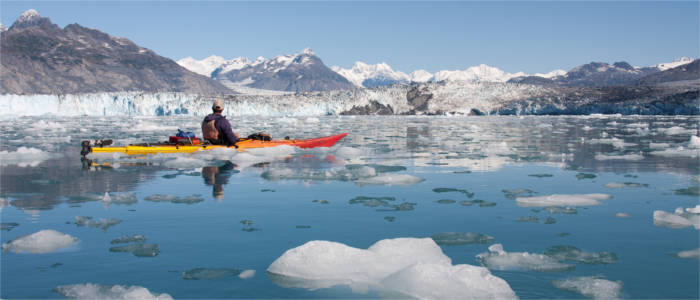
Information
Due to the remoteness of many places, the best way of arriving is by plane or ship. Several places such as the capital of Juneau are completely cut off from the road network and can only be reached this way. There over 250 airports in the state, which you can reach by propeller or water plane. International airports are located in Anchorage and Fairbanks. Please remember bringing the right equipment and appropriate clothes.
Remoteness and love of adventure are in perfect harmony in Alaska. Outdoor fans definitely get their money's worth when they go kayaking on the Yukon River, hike through the colourful tundra or go ice fishing between the glaciers. In addition, you find an impressive culture, which is shaped by different groups of native inhabitants.


